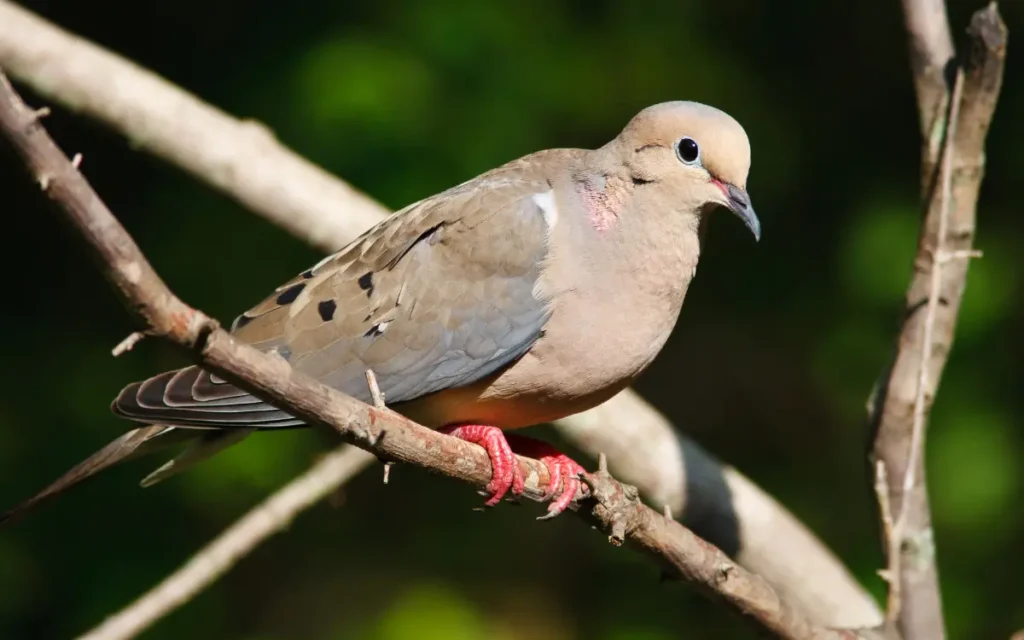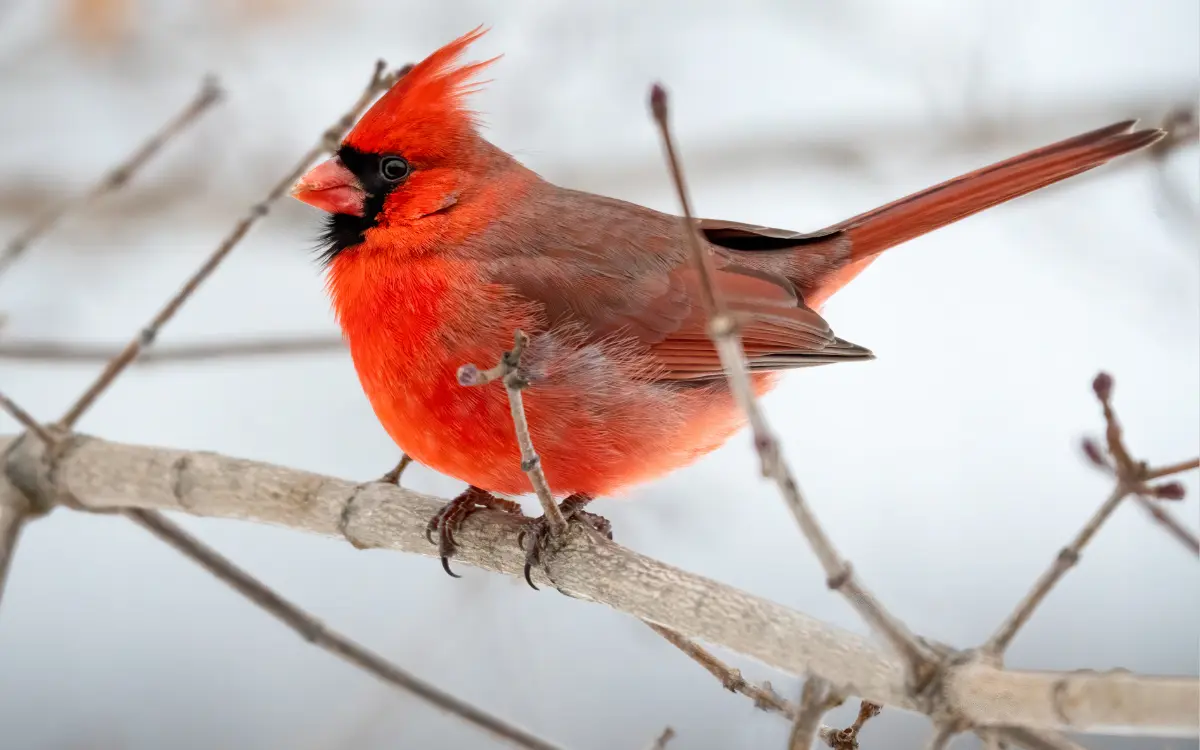Mourning Dove vs White winged Dove: How to Tell Them Apart
Both Mourning Doves and White-winged Doves are common across North America, often seen in backyards, fields, and city parks. With their similar body shapes and soft cooing calls, they can be tricky to distinguish. This guide highlights the key differences in their size, markings, range, and behavior so birdwatchers can identify them with ease.
Mourning Dove vs White-winged Dove Comparison

| Feature | Mourning Dove | White-winged Dove |
| Size | 9–13 inches | 11–12 inches |
| Weight | 4–6 oz | 5–8 oz |
| Color | Soft grayish-brown with black spots on wings | Gray-brown with bold white wing stripe |
| Tail | Long, pointed with white edges | Shorter, rounded with less contrast |
| Call | Soft, mournful coo | Who-cooks-for-you? coo with a hoot-like quality |
| Range | Widespread across North America | Southwestern U.S., Mexico, expanding northward |
| Habitat | Open fields, farmlands, suburbs | Desert edges, urban areas, open woodlands |
Physical Appearance
Mourning Dove
- Slender body with long, pointed tail edged in white.
- Soft, muted colors: light grayish-brown with a pinkish wash on the chest.
- Black wing spots are subtle but noticeable up close.
White-winged Dove
- Slightly larger and stockier.
- Distinctive white stripe across the wings, visible both perched and in flight.
- Blue eye ring and darker facial features stand out more than on a Mourning Dove.
Songs and Calls
Mourning Dove
- Famous for its gentle, mournful coo that gives the species its name.
- Often mistaken for an owl call by beginners.
- Males also make a whistling sound with their wings during flight.
White-winged Dove
- Louder, more rhythmic call often described as “who cooks for you?”
- Less mournful and more repetitive compared to Mourning Doves.
Range and Habitat

Mourning Dove
- Found almost everywhere in North America, from Canada to Mexico.
- Prefers open fields, farmlands, and suburban backyards.
- One of the most widespread and abundant dove species.
White-winged Dove
- Native to the Southwestern U.S. and Mexico, but has expanded northward due to urbanization.
- Common in deserts, city parks, and agricultural areas.
- Often seen in large flocks, especially near grain fields.
Behavior and Diet
Mourning Dove
- Feeds mostly on seeds, often foraging on the ground.
- Usually seen in pairs or small groups.
- Builds flimsy nests in trees, shrubs, or even on ledges.
White-winged Dove
- Similar seed diet but more likely to forage in agricultural areas.
- Forms much larger flocks compared to Mourning Doves.
- Strong flyers, capable of long migrations between breeding and wintering grounds.
Read also: Scrub jay vs pinyon: Comparison
Symbolism and Cultural Significance
- Mourning Dove: Symbol of peace, comfort, and remembrance. Commonly associated with spirituality and used as a symbol of hope in many cultures.
- White-winged Dove: Associated with resilience and adaptability, particularly in desert and urban environments. Also has cultural ties in the Southwestern U.S. and Mexico.

Tips for Birdwatchers – Quick ID Checklist
- Look for the white stripe: If you see it, it’s a White-winged Dove.
- Listen to the call: Mourning Dove = soft and sorrowful; White-winged Dove = louder, patterned.
- Tail shape: Mourning Dove = long and pointed; White-winged Dove = shorter and rounder.
- Region: Mourning Doves are nearly everywhere, White-winged Doves are more southwestern but expanding.
Frequently Asked Questions
Can Mourning Doves and White-winged Doves live in the same area?
Yes, especially in the southern U.S. where their ranges overlap.
Which species is more likely to visit feeders?
Both will visit feeders, especially for millet and sunflower seeds. White-winged Doves tend to appear in larger flocks.
Why do Mourning Doves sound sad?
Their cooing has a sorrowful tone to human ears, which inspired the name “Mourning Dove.”
Are both species migratory?
Mourning Doves migrate in colder regions, though many stay year-round in the south. White-winged Doves migrate shorter distances, but southern populations may remain year-round.
Are these doves hunted?
Yes, Mourning Doves are one of the most hunted game birds in North America. White-winged Doves are also hunted in parts of Texas and Mexico.






